Last-Minute NYC Holiday Gift Guide 🎁
We’ve created a holiday gift guide with presents for the intrepid New Yorker that should arrive just in time—

The demolished Clark and Vanderbilt mansions are among a handful of lost NYC buildings resurrected at this festive holiday display!

The original Gilded Age mansion of “Copper King” William A. Clark, at 960 Fifth Avenue, was demolished in 1927. However, you can see its opulent facade each year during the holiday season. The Clark Mansion is one of a handful of lost structures reborn at the annual New York Botanical Garden Holiday Train Show®. This year, the show coincides with celebrations of the 60th anniversary of New York City's Landmarks Law enacted in 1965—too late to save the Clark Mansion.
While Clark's roughly $190 million abode was built with Italian marble, oak from the Sherwood Forest of England, and stone from his own quarry in New Hampshire, the replica at the Botanical Garden was carefully crafted out of cinnamon bark curls, pine cone scales, acorn caps, star anise, pistachio nut shells, twigs, palm fronds, and more plant materials. It is one of nearly 200 replicas of New York City structures currently on display at the Holiday Train Show®.
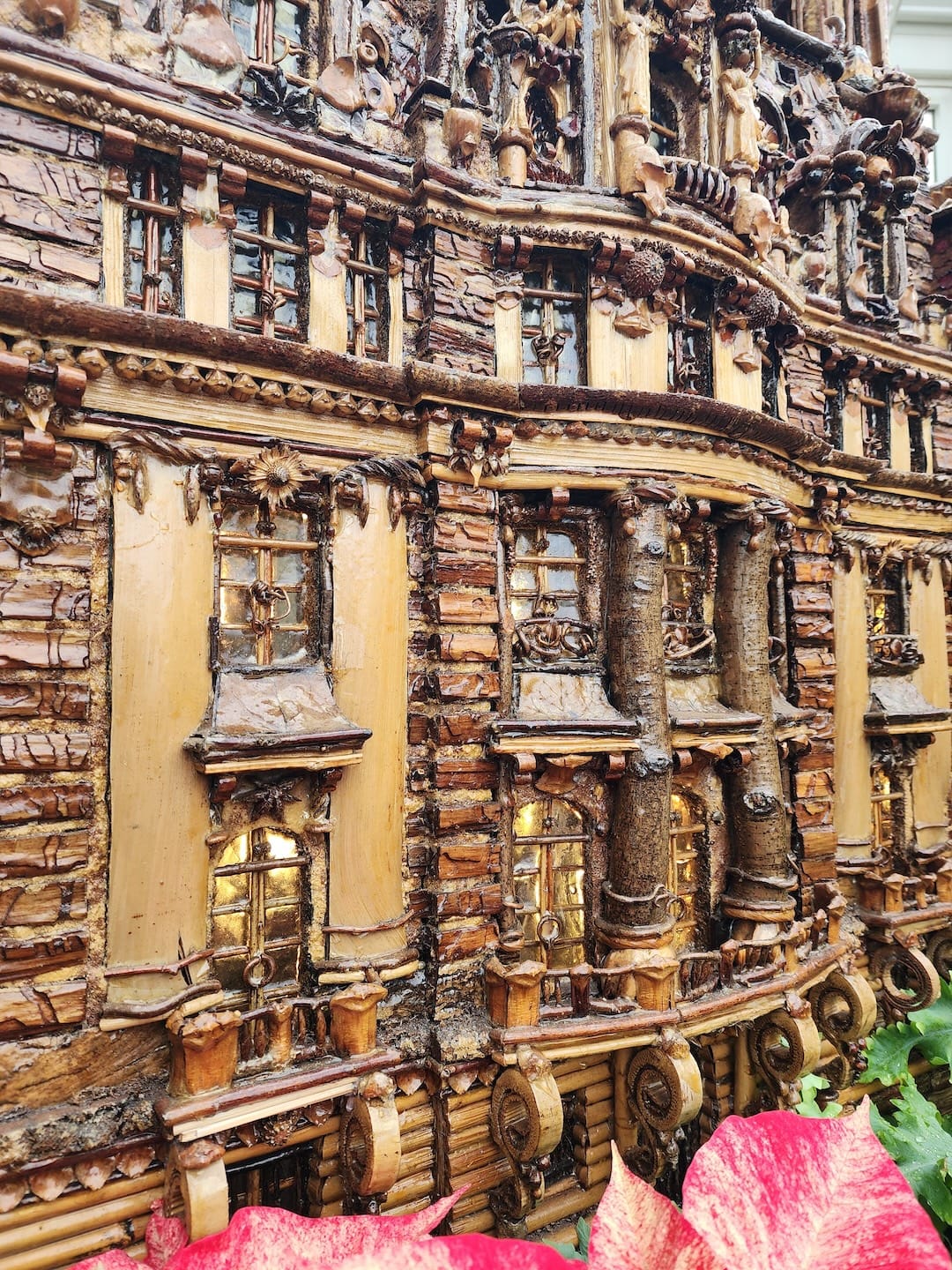
After making his fortune out west, Clark built himself a palace on Manhattan's illustrious "Millionaire's Row." According to The Museum of the City of New York, it took 14 years to complete the mansion at a cost of roughly $6 million, just over $190 million today.
For that large price tag, the home had quite a few lavish amenities. Among its 121 rooms and 31 baths, there were four art galleries, a swimming pool, an underground rail for heating coal, a conservatory, a chamber organ, a Gothic library, and more luxuries. The mansion was so large and overly ornate that it was dubbed "Clark's Folly."
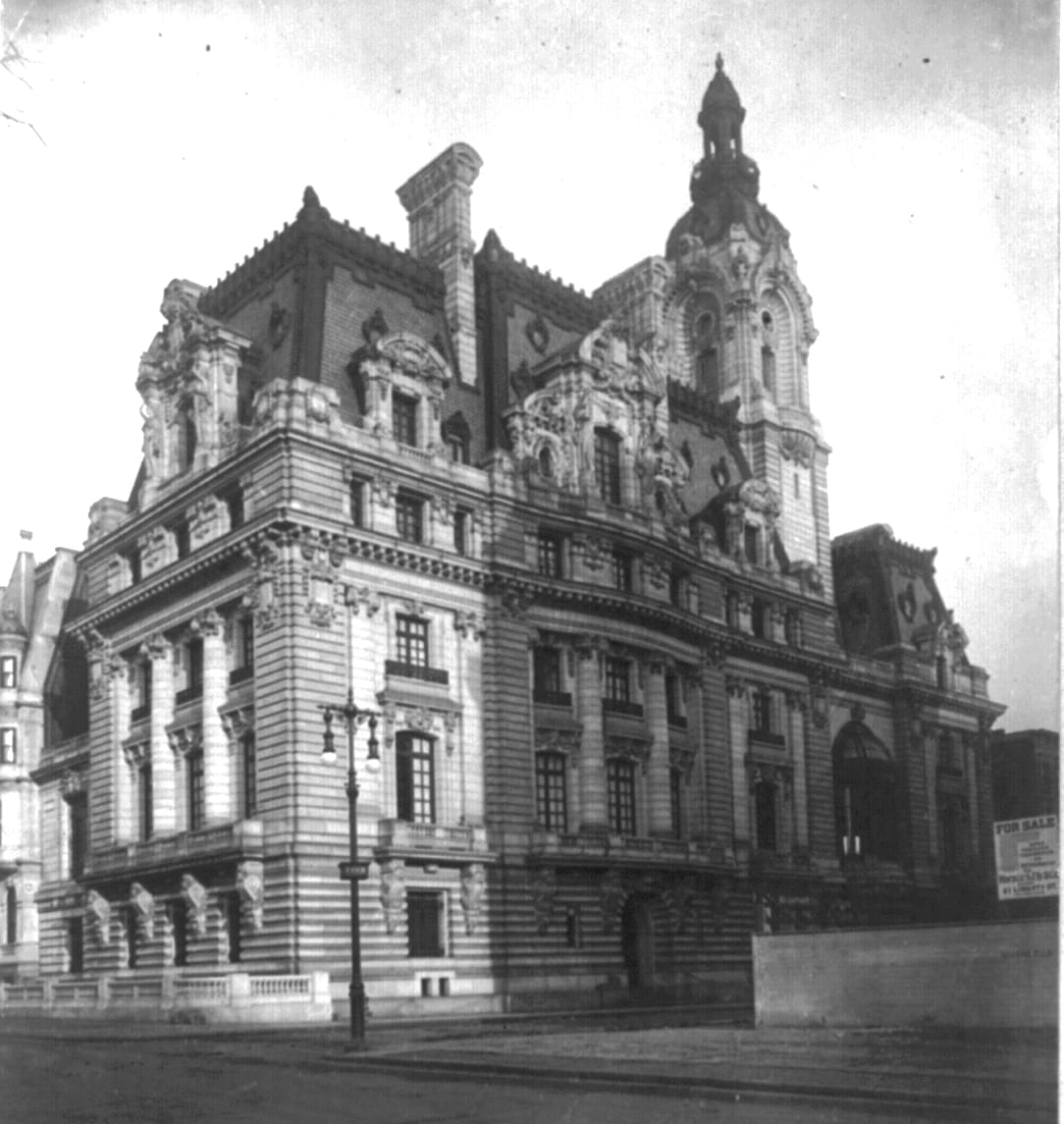
After all the construction time and expense, Clark would only get to enjoy his mansion for a little over a decade. He died in 1925. Upon his death, his wife and daughter moved into an apartment a few blocks south. The mansion was sold for a mere $3 million and demolished to make way for luxury apartments designed by Warren & Wetmore (Grand Central Terminal's architects) and Rosario Candela.
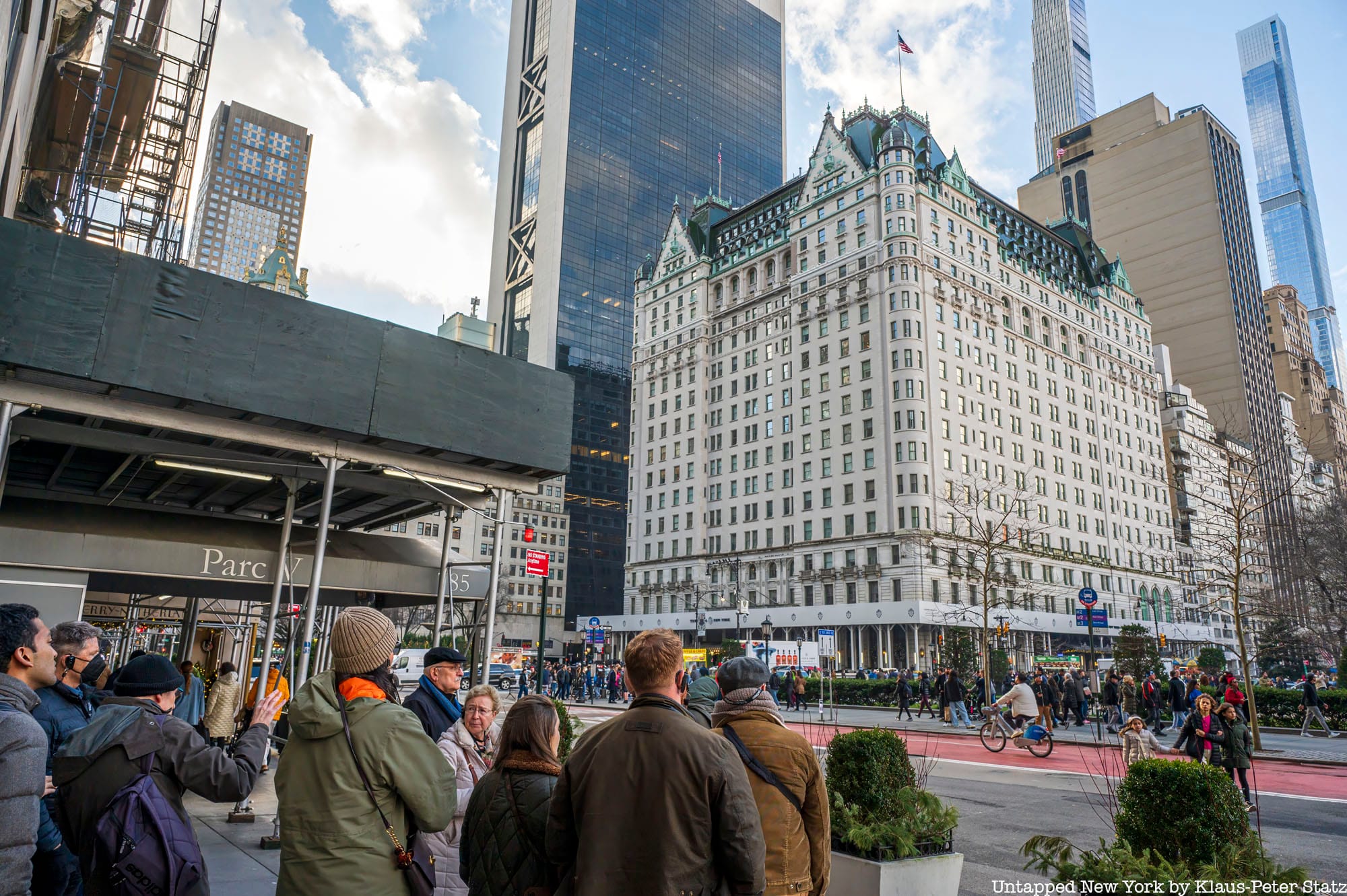
Admire the extant facades of Millionaire's Row and see stunning images of the opulent homes that have been lost while hearing about the scandalous goings-on inside.
Use code BLACKFRIDAY2024 for 50% off tickets!
The Clark Mansion isn't the only ill-fated Gilded Age mansion to appear at the annual Holiday Train Show®. You might spot a replica of the home of William K. Vanderbilt nestled among the foliage. Designed by Richard Morris Hunt, the Vanderbilts affectionately referred to their mansion at 660 Fifth Avenue as the Petit Chateau. Alva Vanderbilt hosted her famous costume ball here in 1883 with 1,200 guests in her banquet hall, which stretched 50 feet wide and two stories tall. The mansion was demolished by a real estate developer in 1926. An office tower at 666 Fifth Avenue now stands in its place.

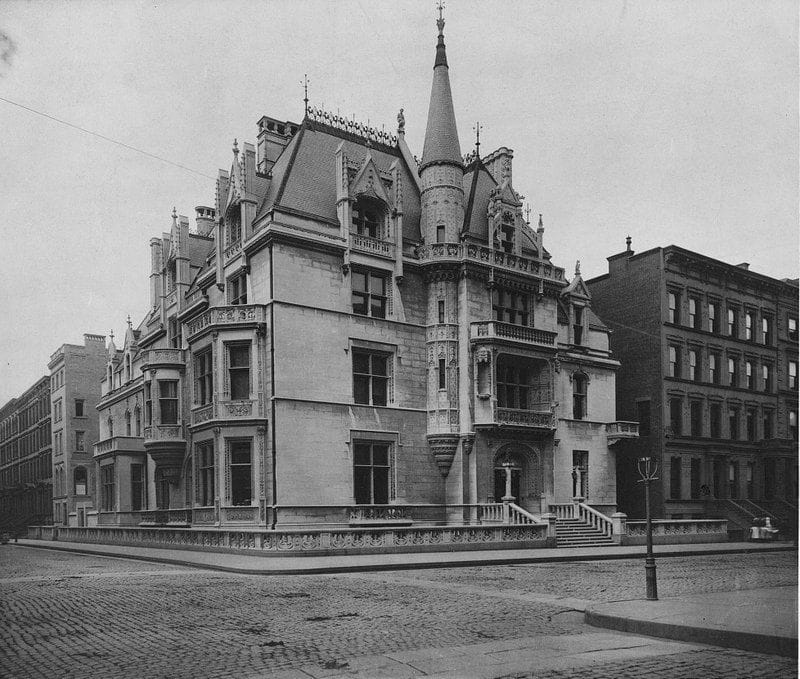
William K. Vanderbilt House replica as it appeared in 2019, Right image from Library of Congress
Other notable lost structures recreated with organic matter include the original Penn Station (completed in 1910 and demolished in 1963), the Elephantine Colossus that once stood on Surf Avenue (burnt down in 1896), the Old Bandstand at Central Park (demolished 1922), and the original Yankee Stadium (demolished 2010).

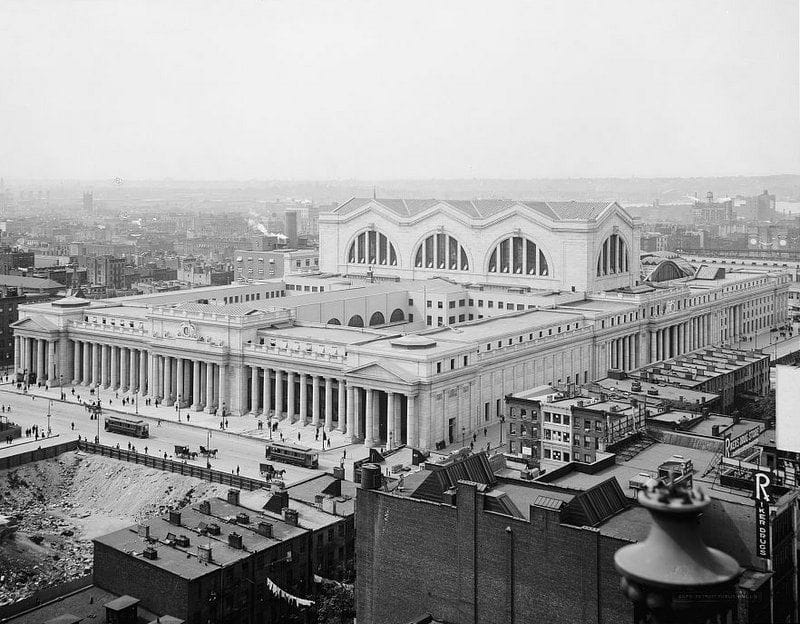
There are also a variety of prominent lost homes such as the Apthorp Mansion (demolished 1891), James L. Morgan House at 7 Pierrepont Street in Brooklyn (demolished ca. 1920), and the Jordan L. Mott House at 2122 Fifth Ave (demolished 1936), among others.
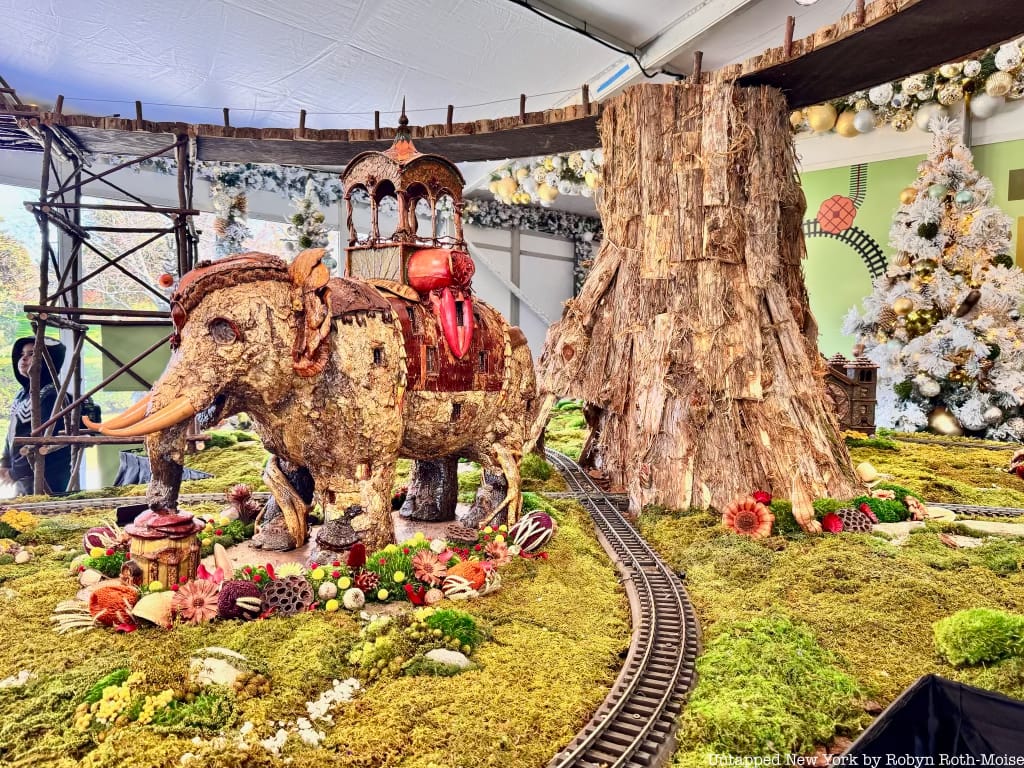
All of the replicas were made by artists at Applied Imagination, a Kentucky-based company that has been bringing the train show to life since 1992. Founded by landscape architect and train enthusiast Paul Busse in 1991, the “botanical architecture” company is now run by Busse’s daughter Laura Busse.
See how many lost structures you can spot at the Holiday Train Show®, on view through Monday, January 20, 2025. Tickets are available here!
This post contains affiliate links, which means Untapped New York earns a commission. There is no extra cost to you and the commissions earned help support our mission of independent journalism!
Subscribe to our newsletter